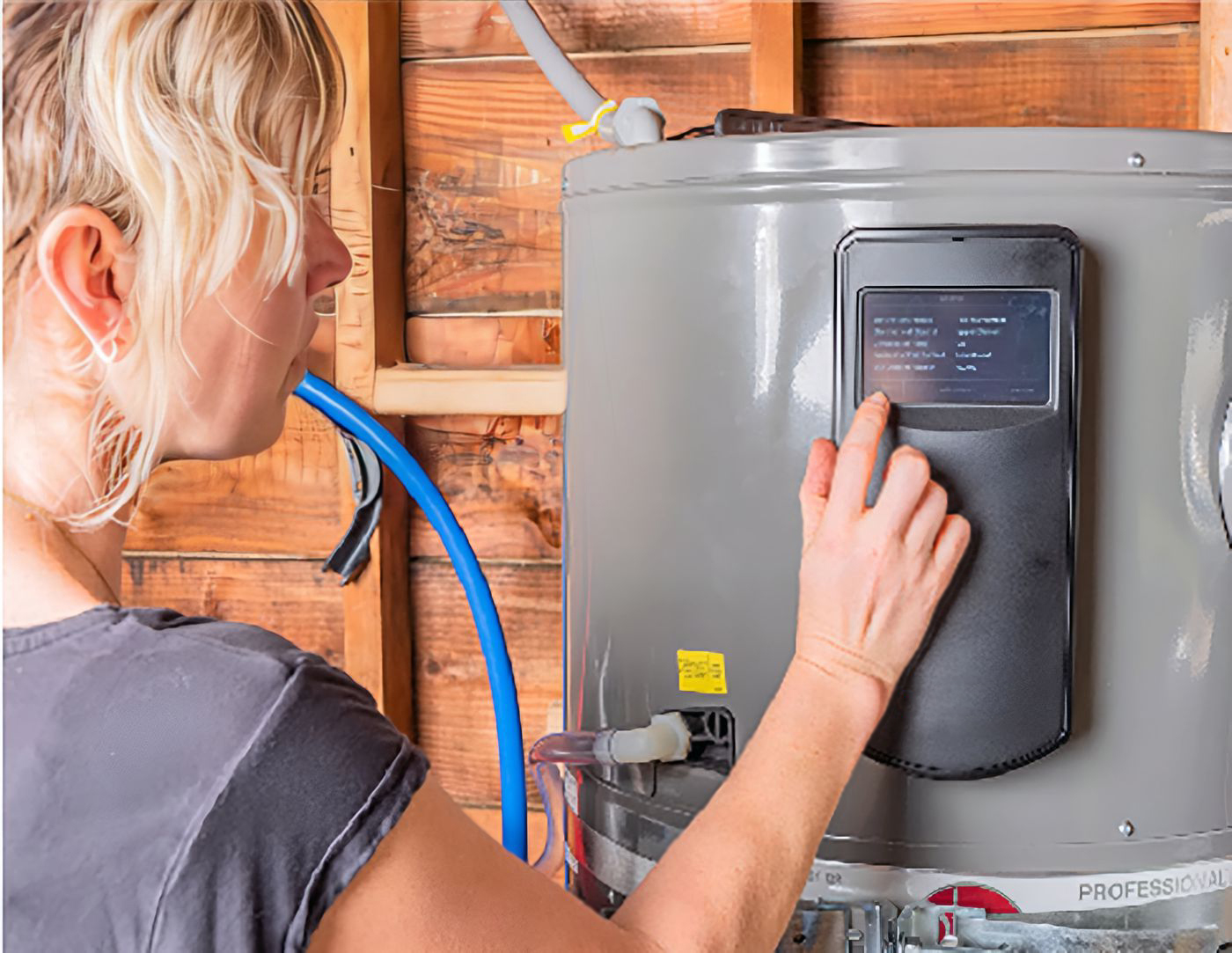
If you have a customer who needs a new electric water heater and would like to reduce their electric bill and carbon footprint, they might be interested in switching to a heat pump water heater (HPWH). While a heat pump water heater will save significant energy on a year-round basis, customers need to be aware that in a cold climate the net performance will drop in the winter. A HPWH will need at least 750 cubic feet of open space that stays above 40 degrees Fahrenheit year-round. HPWHs located in cold basements or without sufficient air circulation will reduce efficiency and energy savings.
Most HPWHs are hybrid units that combine a heat pump with backup electric resistance elements. Although the heat pumps in these hybrid water heaters can heat water at high efficiencies, the recovery rate is significantly slower than traditional water heaters. A typical 4.5-kilowatt electric resistance element can reliably heat more than 20 gallons of water per hour, but a heat pump can have a recovery rate of 8 gallons per hour at an air temperature of 68 degrees Fahrenheit. The difference is the heat pump only draws about 550 watts of energy compared to 4,500 watts from standard heating elements, so most hybrid units will use the heat pump whenever possible. However, built-in controls switch to conventional resistance heating when there are large hot water needs.
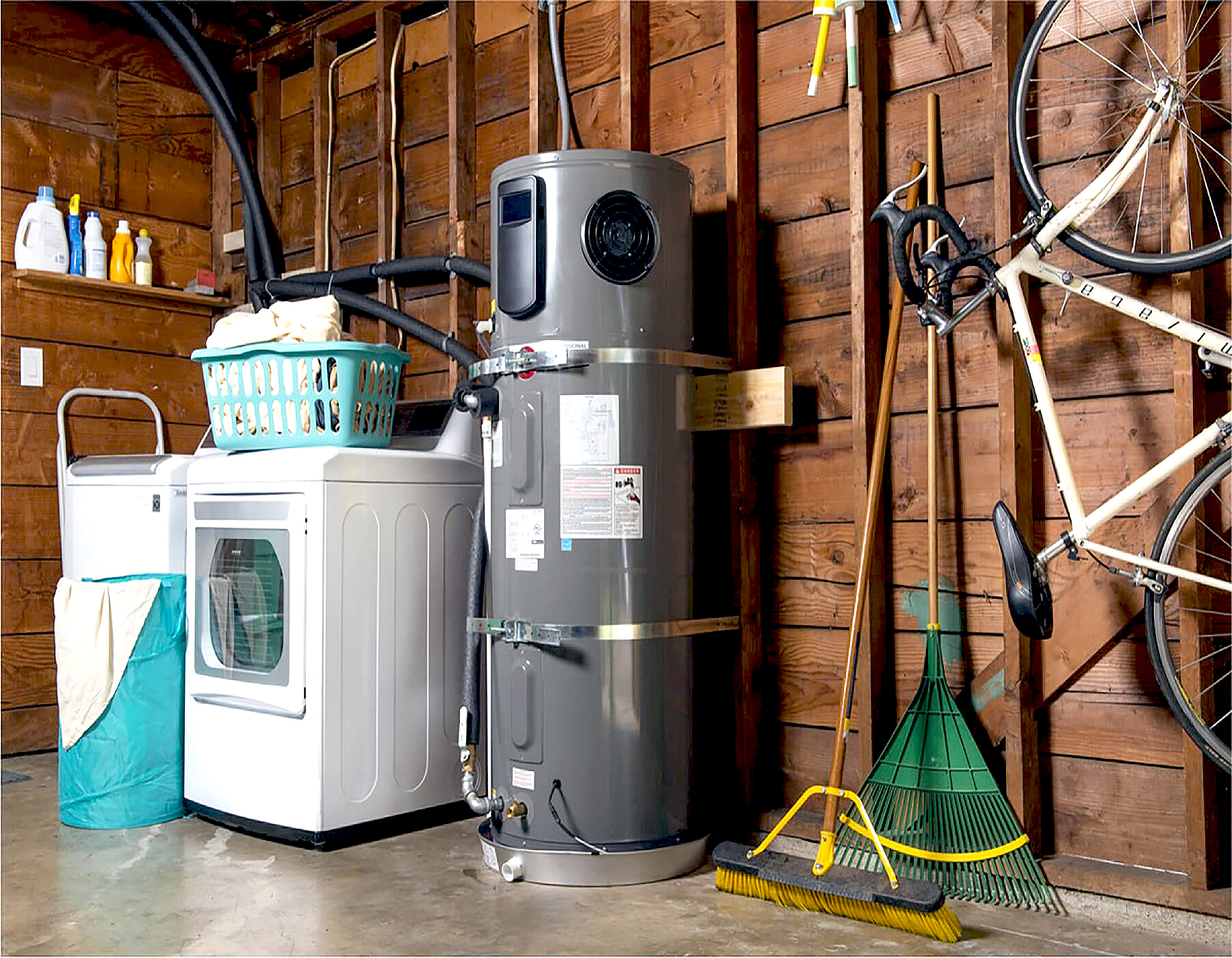
Heat pump water heater technology allows the heating of water by capturing warmth from a home’s ambient air. IMAGES COURTESY OF RHEEM MANUFACTURING COMPANY, NEEA, AND HWS

HPWHs work by transferring heat from the surrounding indoor air. A fan pulls the ambient warm air and blows it across a series of refrigerant-filled evaporator coils. The slightly warm refrigerant is pumped through a compressor to increase the pressure and temperature before being passed through condenser coils. The hot refrigerant passes its heat to the water, cools off and then returns to the evaporator coils where it starts the process again, collecting warm ambient air. By pulling heat from the surrounding air, heat pump water heaters also provide dehumidification to the space in which they are located. The amount of dehumidification will depend on how much hot water a household uses.
Because heat is transferred instead of being generated, HPWHs can be very efficient water heaters, but the size and its first hour rating can make or break its performance. The first hour rating is the number of gallons of hot water the heater can supply per hour. Look for an EnergyGuide label on any new HPWH to determine the first hour rating and try to find the model that best matches the expected peak hour demand.
One of the ratings of a water heater’s performance is its Uniform Energy Factor (UEF), which measures how much water a system can heat in a given time period relative to how much energy it uses. The higher the UEF, the more efficient the water heater. HPWHs generally have a UEF between 2.2 and 3.5. As states encourage energy savings, many offer rebates for switching to HPWHs. For example, HPWHs with a minimum UEF of 3.2 are eligible for a $750 rebate through Mass Save when replacing a traditional electric, gas, propane or oil-fired water heater.
According to the U.S. Department of Energy, HPWHs can save the average household hundreds of dollars a year on energy bills. However, the efficiency of HPWHs can be greatly affected by the way a household uses its hot water. When large quantities of hot water are used in clusters, HPWHs will revert to electric resistance mode, reducing the efficiency of the unit. Homeowners can reduce this effect by purchasing a larger HPWH, increasing the set point temperature, or changing behavior. By increasing the size and temperature of an HPWH, more hot water can be delivered at a given time before the resistance elements are needed. Spreading the water load over a greater period of time may also provide similar benefits and reduce standby losses.
HPWHs are an energy-efficient technology and many offer Wi-Fi integration that allow control from a smartphone or other digital device. Some offer leak detection with automatic water shutoff but there are additional things to remember before installing, including:
- Most heat pump water heaters will require a few more inches of vertical clearance than a traditional hot water tank.
- Replacement of a gas, propane or oil-fired water heater with an HPWH will require a new electrical connection and available space and capacity in the electrical panel.
- The heat pump water heater will be installed with a condensate pan that will need to be connected or pumped to an appropriate drain.
- Heat pump water heaters are noisier than conventional water heaters, comparable to a dishwasher or refrigerator (approximately 50 decibels).
- Homeowners will need to maintain the filter and occasionally check the condensate line.
- Mass Save rebates are available, and federal tax credits may also be available.
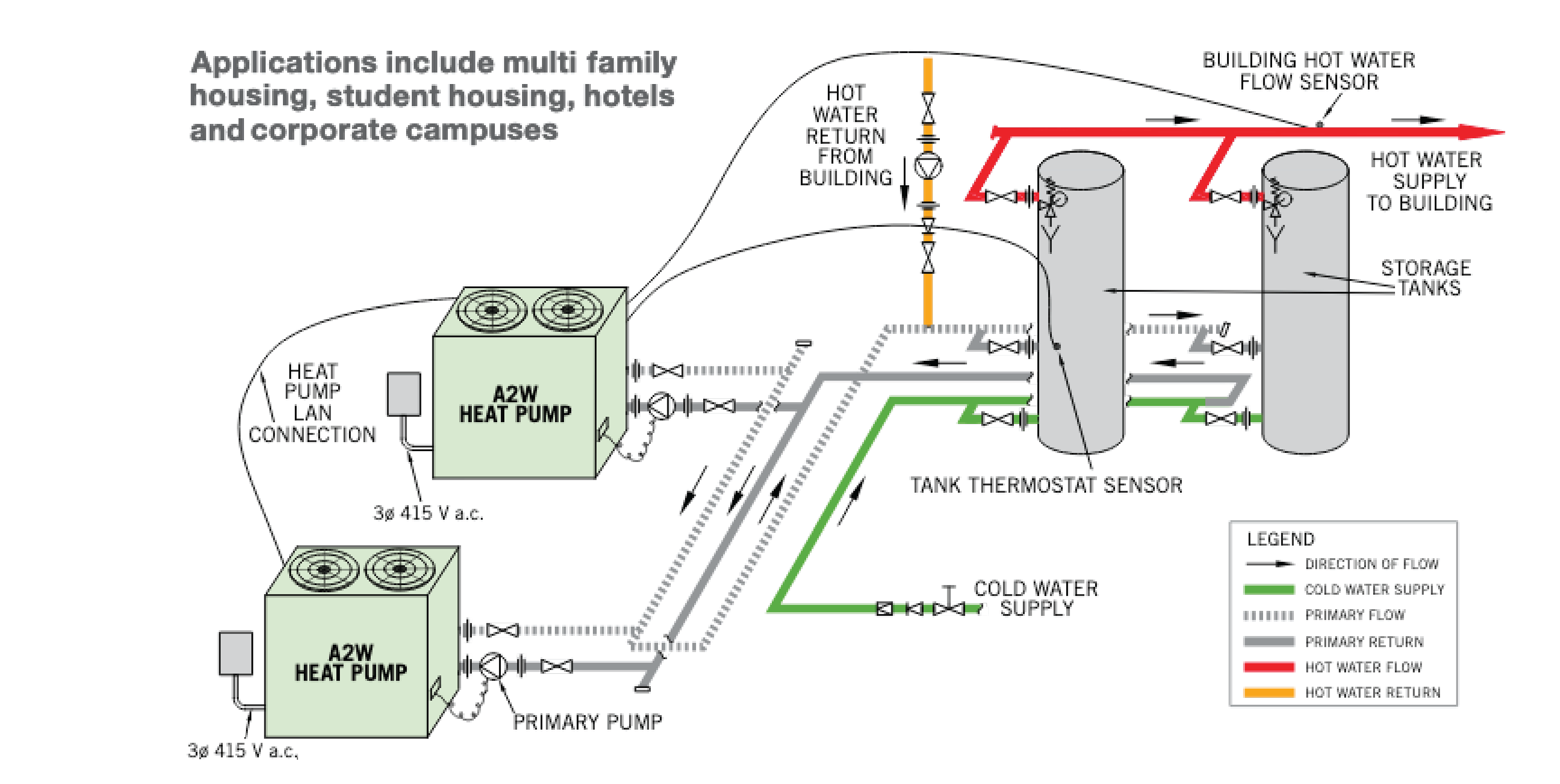
This diagram demonstrates commercial gas water heater usage, which can be applied for multi family housing, student housing, hotels and businesses.
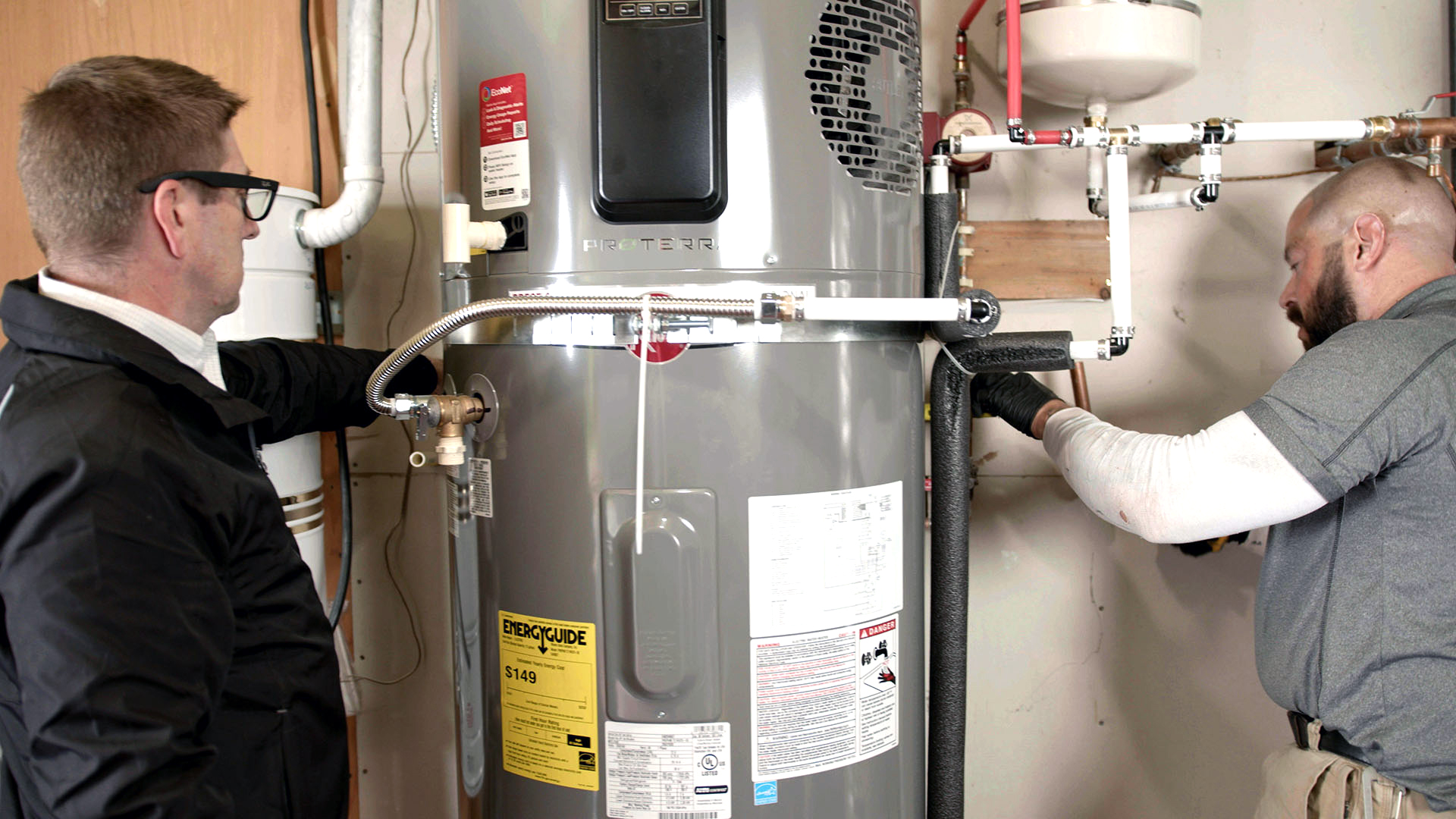
Some installers say utility partnerships are key to driving consumer awareness and increasing adoption of ENERGY STAR® heat pump water heaters. IMAGES COURTESY OF RHEEM MANUFACTURING COMPANY
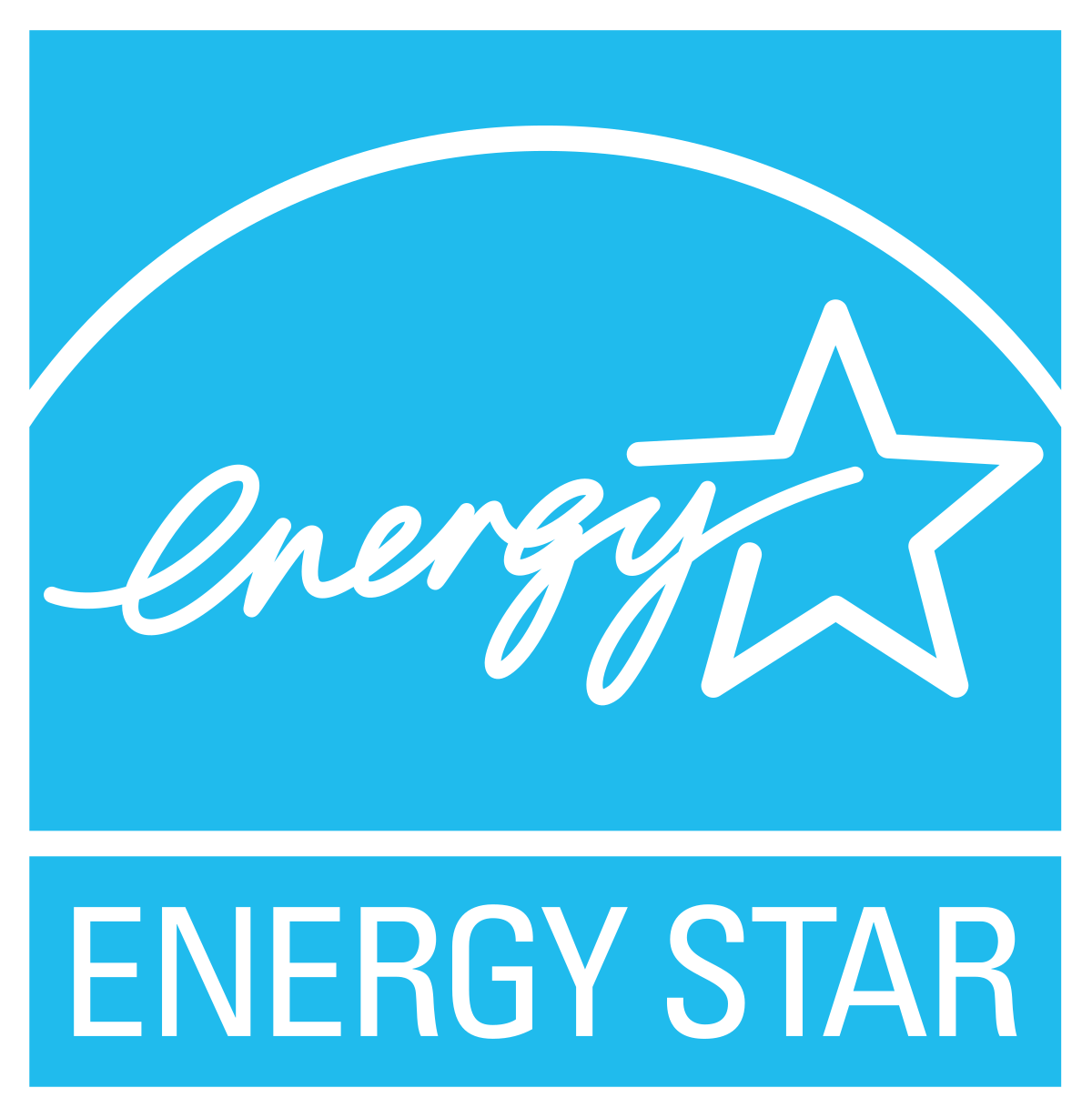
Find all the information you need to choose ENERGY STAR certified products, including rebates, and retailers near you. Products that earn the ENERGY STAR label meet strict energy-efficiency specifications set by the U.S. EPA, helping you save energy and money while protecting our climate by making choices that count for a clean energy future. www.energystar.gov/products

Peter Kelly
IAPMORegional Manager
Region 5 – states represented: Connecticut, Maine, Massachusetts, New Hampshire, New York, Pennsylvania, Rhode Island, Vermont
Last modified: May 8, 2024
